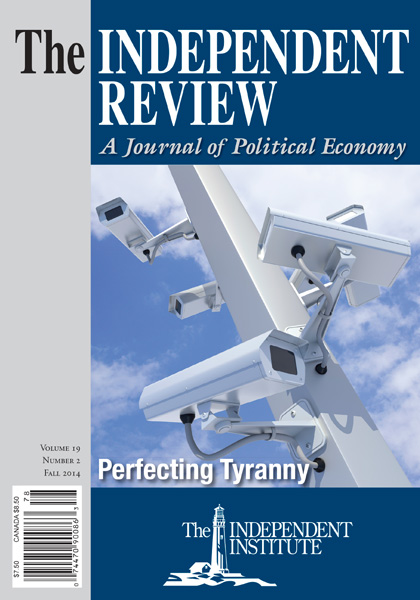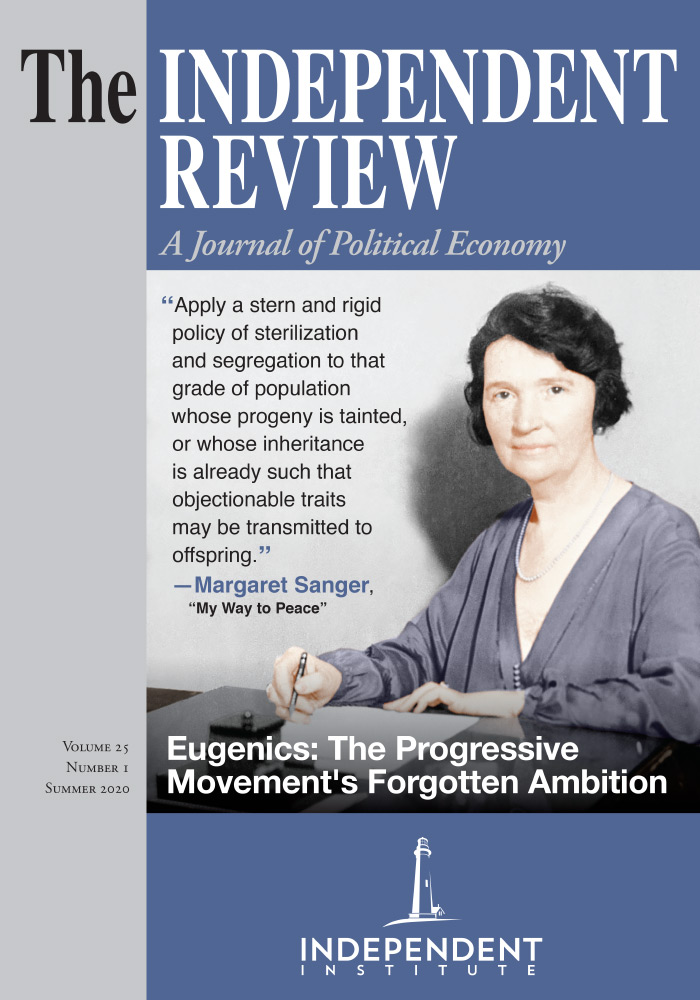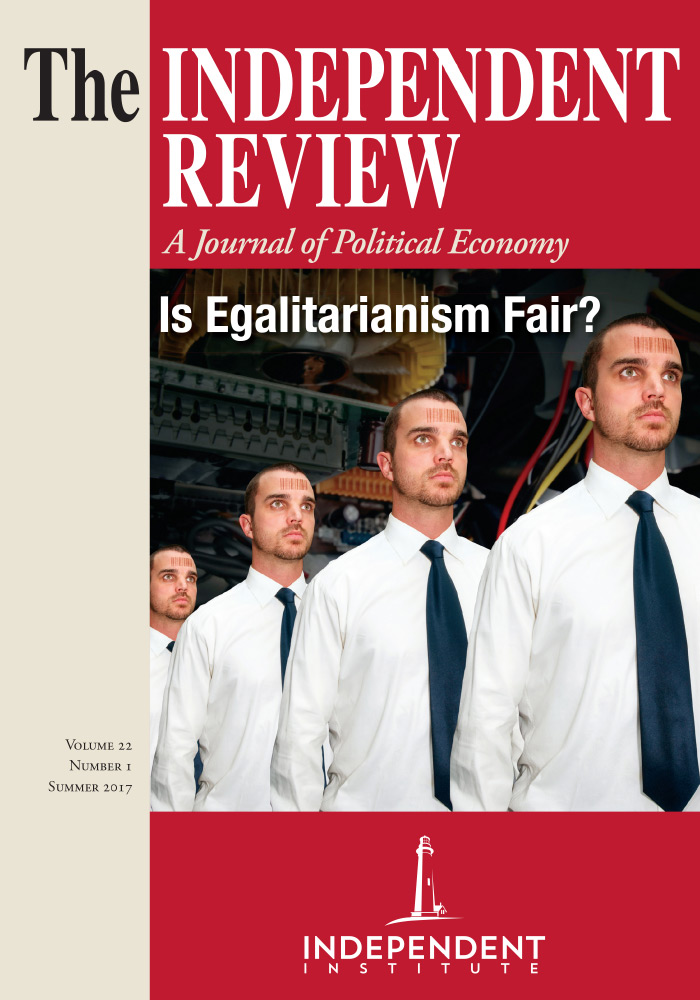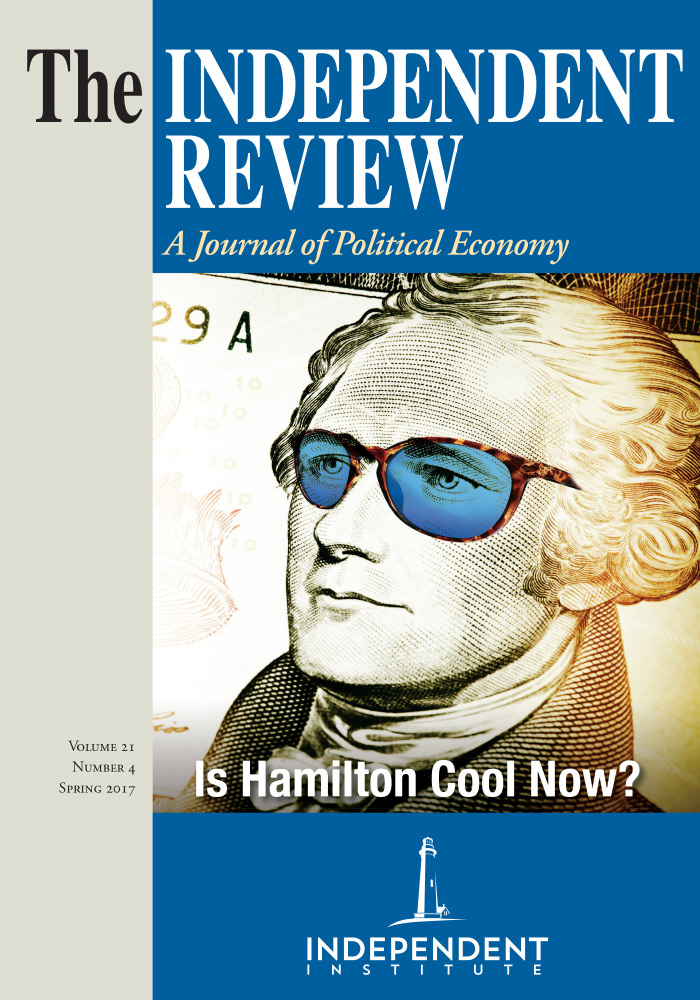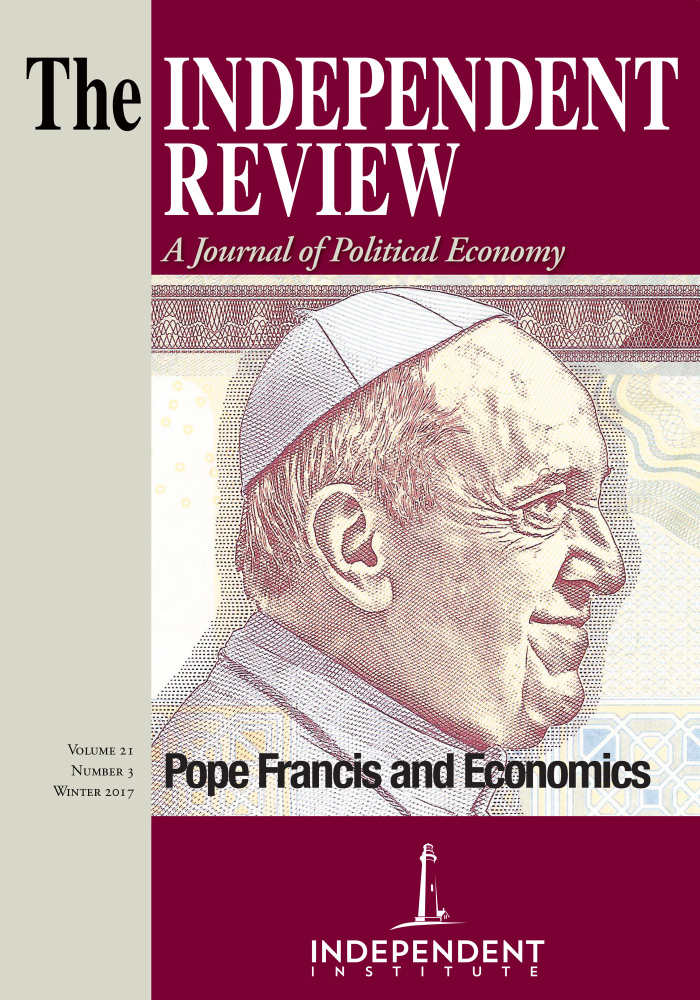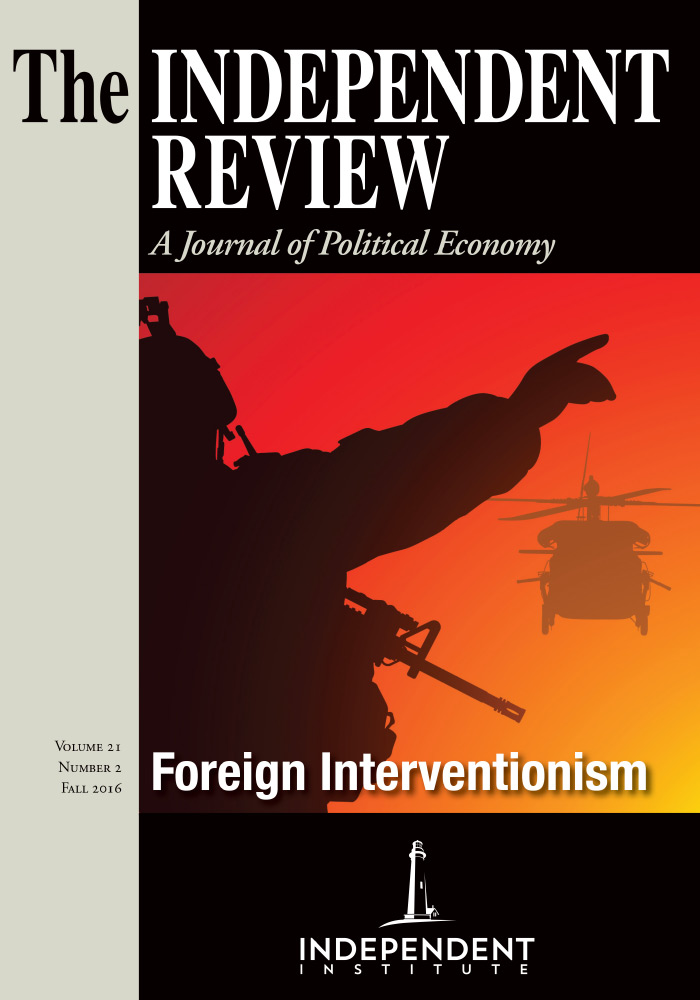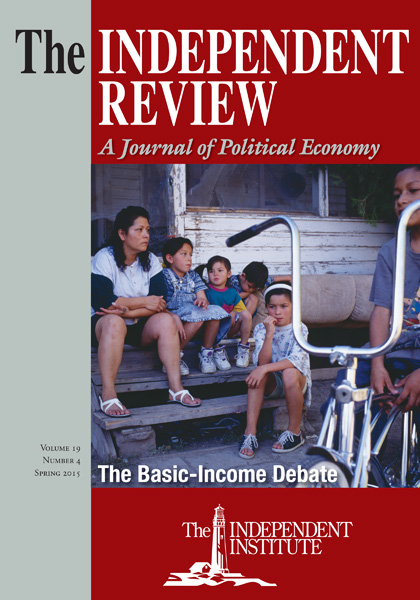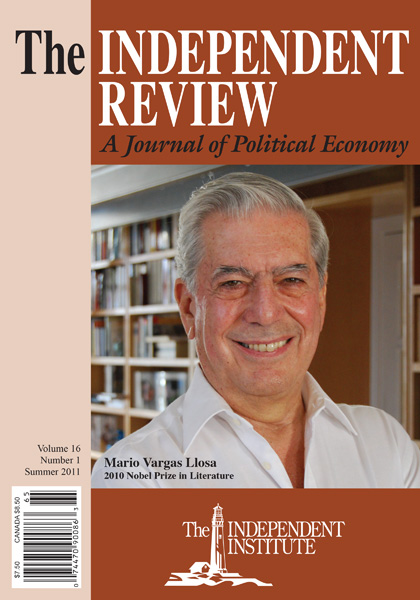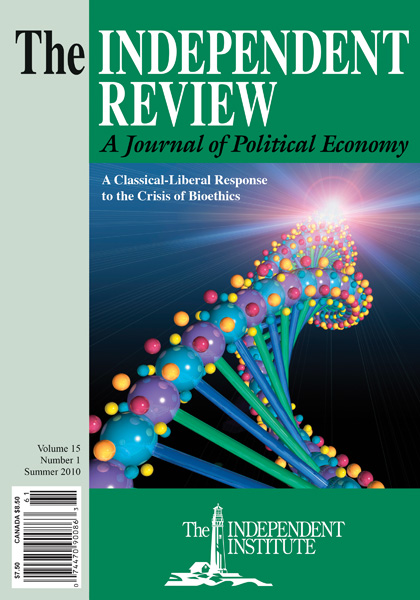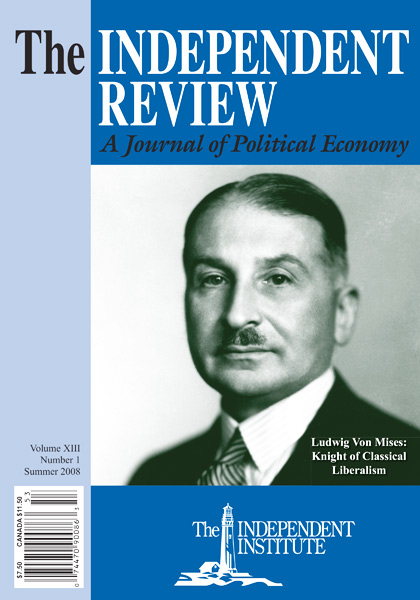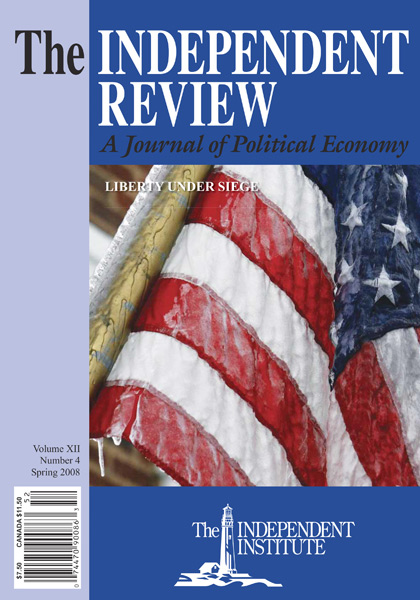Coercive government actions that target another country often act like a boomerang, turning around and knocking down freedoms and liberties in the “throwing” nation. Two developments in the United States illustrate the boomerang effect: the rise of government surveillance and the growing militarization of the police.
Article
Writing at the dawn of the twentieth century, Mark Twain provided the following ominous commentary about a hypothetical “Great Republic” that had adopted a foreign policy of actively intervening in distant societies: “But it was impossible to save the Great Republic. She was rotten to the heart. Lust of conquest had long ago done its work; trampling upon the helpless abroad had taught her, by a natural process, to endure with apathy the like at home; multitudes who had applauded the crushing of other people’s liberties, lived to suffer for their mistake in their own persons” (1972, 395).
What if Twain’s scenario were not hypothetical, but rather real? What if foreign interventions abroad have the long-term effect of undermining liberties and freedoms at home? This paper explores how interventions abroad can affect domestic government activities in a way that reduces its citizens’ freedoms and liberties. Although our analysis is generalizable, we focus on a specific “Great Republic”—the United States—because of its global dominance in economic and military affairs. We develop a theory of the “boomerang effect” of foreign interventions for understanding Twain’s “natural process” through which interventions abroad increase the scope of government activities domestically, resulting in a reduction of citizens’ liberties and freedoms. The underlying logic of the boomerang effect is as follows.
Foreign interventions serve as a testing ground for domestically constrained governments to experiment with new forms of state-produced social control over distant populations. Intervening abroad allows governments to circumvent many of the domestic constraints that end at the nation’s geographic borders. The relative weakness or altogether absence of international constraints allows members of the intervening government to develop and hone new methods of control over citizens. Under certain conditions, these innovations in social control are then imported back to the intervening country through several channels that change the costs and benefits associated with expanding the scope of domestic government activities. The result is that the intervening government becomes more effective at controlling not only foreign populations but the domestic population as well.
The term foreign intervention is broad and has many different meanings. For our purposes, it refers to the use of the discretionary power of the members of one government to achieve some desired end in another society (see Coyne and Mathers 2010). Under this general definition, interventions may be more direct and hostile in nature, or they may be more indirect and mild in their methods. We limit our focus to what we call “coercive foreign interventions,” which have two notable characteristics. First, an intervening government seeks to shape outcomes—political, economic, social, legal—to achieve an end that is different from what would have emerged absent the intervention. Second, in order to achieve its objectives, the intervening government invests resources to actively deter and suppress any resistance from the foreign population.
Our analysis contributes to three strands of literature. The first includes the literature on constitutional political economy (see Buchanan 1975; Brennan and Buchanan 1985; Weingast 1995; Gordon 2002), which explores the role, design, and enforcement of rules as constraints on government and private behavior. Our contribution to this literature is to emphasize that the domestic political structure is not invariant to interventions abroad. We demonstrate how a government, acting within existing domestic constraints to carry out coercive foreign interventions, can expand the scope of its domestic activities and in doing so generate a loss of liberties and freedoms at home.
The second strand of literature focuses on the costs and consequences of war and foreign intervention. This literature considers the costs of war, monetary and nonmonetary, seen and unseen (see Porter 1994; Denson 1999; Blimes and Stiglitz 2008; Duncan and Coyne 2013; Eland 2013). Our analysis contributes to this literature by emphasizing that the costs of foreign intervention are typically understated because they tend to neglect the associated changes in the scope of domestic government activities that reduce domestic citizens’ freedoms.
The third strand of literature consists of theories of government growth, which fall into several different categories. Political science and public-choice scholars have developed two types of theories of government growth (see Garrett and Rhine 2006). “Citizen over state” theories argue that government growth is the result of increased
demand by citizens—either as individual voters or as organized special interests—for government programs. In contrast, “state over citizen” theories maintain that the size of government is supply driven by political actors who seek to expand the size of government irrespective of citizen demand. Another category of explanations for the growth of government emphasizes the role of crises. Robert Higgs (1987) proposes a ratchet effect whereby government grows during times of crises. Retrenchment takes place following the crises, but the postcrisis size of government remains larger than the precrisis size. Bruce Porter (1994) analyzes how war making leads to the centralization of state power because the political center has the resources and incentive to fund and control military technologies. Ivan Eland (2013) catalogs a variety of ways the U.S. government has expanded due to war. Yet another explanation for government growth focuses on technological advances and highlights how technological improvements allow for better coordination, communication, and large-scale organization of government activities (see Cowen 2009).We contribute to this third strand of literature by emphasizing the different margins of government growth. Growth in government can take place in the scale of government, as discussed in the existing literature, as well as in the scope of government activities. These two margins often reinforce each other, but not necessarily. The scope of existing government activities may change, for example, even though the overall scale of government may remain the same. In this regard, our analysis is closest to that of Higgs (1987), whose treatment of the growth of “Big Government” appreciates the interrelation between the scale and the scope of government activities. He argues that government growth during crises can and does occur both in the scale of traditional activities and in the “widening [of] the scope of its effective authority over economic decision-making” (62). Our analysis builds upon Higgs’s ratchet-effect framework for understanding the growth of government in stressing that coercive foreign interventions often increase the scope of domestic government activities and power resulting in the erosion of domestic liberties. We discuss specific mechanisms underpinning the process of expanding government powers, which can be seen as contributing to the broader ratchet effect identified by Higgs.[1]
We proceed as follows. The next section discusses how coercive foreign interventions entail a foreign government imposing social control over a population located outside of its geographic boundaries. After this we discuss the four channels that constitute the boomerang effect of coercive foreign intervention and the conditions under which we expect them to be relevant. The following section applies the boomerang effect to two episodes in the United States: (1) the origins of domestic government surveillance and (2) the rise of special weapons and tactics (SWAT) teams and the militarization of domestic police. We conclude with the implications of this analyses.
Coercive Foreign Intervention as Exogenous, State-Produced Social Control
Social control entails rules that govern human behavior. As Robert Ellickson writes, “A system of social control consists of rules of normatively appropriate human behavior. These rules are enforced through sanctions, whose administration is governed by other rules” (1987, 69, emphasis in original). He goes on to provide a taxonomy of alternative systems of social control and enforcement mechanisms consisting of three potential “controllers.” Rules can be enforced by a first-party controller through personal sanction (i.e., personal ethics). Alternatively, they can be enforced through second-party controllers, which entail two parties agreeing on solutions to potential conflicts. An example is a principal–agent relationship whereby the agent agrees to rules (i.e., a contract) set by the principal. Finally, rules can be enforced via third-party controllers such as communities—that is, clubs, families, churches—or via the state.[2]
Coercive foreign interventions fall into the last category since they rely on state imposition and enforcement. A third party, consisting of the members of intervening government(s), attempts to achieve its ends by exerting social control over a foreign population to reduce or suppress resistance. Max Weber famously recognized the state as an instrument of coercive social control when he noted that “the modern state is a compulsory association which organizes domination” and that “[t]he right to use physical force is ascribed to other institutions or to individuals only to the extent to which the state permits it” (1958, 78, 83). He also emphasized the importance of the state’s monopoly on force within a given territory. In the context of foreign interventions, however, members of a government broadcast their power beyond their territorial boundaries to exert social control over people living in a different geographic territory. Coercive foreign interventions entail imposing an outsider’s vision on others, which necessarily entails imposing rules on what people can and cannot do. This means that the foreign intervener must exert some control over another populace in order to achieve the desired outcome.
Because exogenous social control is at the core of coercive foreign interventions, a key issue is the presence of constraints on government to prevent abuses of its powers. The fundamental “paradox of political power” is one of simultaneously empowering and constraining the state (see Buchanan 1975; Brennan and Buchanan 1985; Weingast 1995; Gordon 2002). Barry Weingast captures the essence of this paradox when he notes that “[t]he fundamental political dilemma of an economic system is this: A government strong enough to protect property rights and enforce contracts is also strong enough to confiscate the wealth of its citizens” (1995, 1). The concern is that absent constraints those in positions of political power can abuse their powers to achieve their own narrow ends. This matters not just for economic systems, as indicated by Weingast, but also for international relations because a government that is strong enough to intervene in another society is also strong enough to abuse its power for its own ends.
This dilemma has important implications for the way we think about constraints on government, which are typically viewed as limiting abuses by the state against its own citizens. The same constraints that effectively limit a government’s behavior against its own citizens typically do not extend to foreigners. For example, foreign citizens are not granted the same rights and protections as U.S. citizens under the U.S. Constitution. This means that even if a government is constrained domestically to prevent abuses, intervening abroad allows members of that government to circumvent these constraints when dealing with other, distant populations.
Of course, members of a government are not completely unconstrained in international affairs. Treaties and international organizations, for example, can limit state behavior to some degree. But international checks on government behavior are often limited in constraining foreign interventions precisely because governments and especially superpowers tend to establish and influence the enforcement of constraints in these organizations. Absent effective global governance mechanisms, individual governments can circumvent constraints when it is in their interest. As Jacob Cogan writes, “[T]he international system contains few legislative, judicial, or executive processes analogous to those of States, and, consequently, the system’s ability to selfcorrect and self-enforce is much more limited, creating gaps between aspiration and authority, procedures and policy” (2006, 190).As a concrete example, consider again the case of the United States, which has carried out numerous foreign interventions without United Nations authorization— for instance, the invasion of Vietnam in the 1960s, the 1983 invasion of Grenada, the 1989 invasion of Panama, missile strikes on Sudan and Afghanistan in 1998, and the 2003 invasion of Iraq—with no direct sanctioning for failing to gain international support through the United Nations. Most recently, the U.S. government threatened to circumvent the United Nations to intervene in Syria due to the Russian government’s reluctance to do so. More broadly, John Mearsheimer concludes that international “institutions have minimal influence on state behavior and thus hold little promise for promoting stability” by constraining the actions of governments (1994–95, 7). The absence of strong international constraints allows domestically constrained governments to intervene abroad in a largely unconstrained manner and can impose potentially large costs on foreign populations. Often overlooked, however, is that a government’s projection of power beyond its borders can also impose significant costs on domestic citizens due to changes in the character of governmentproduced social control at home.
The Boomerang Effect of Foreign Intervention
The Framework
Facing limited or altogether absent constraints on their powers abroad, coercive foreign interventions allow members of the intervening government to experiment with new forms of state-produced social control. Domestic citizens ruled by the intervening government, however, are not immune from these innovations in state control. There are four related channels through which advancements in stateproduced social control abroad may boomerang back to the intervening country.
First, the initial decision to engage in coercive foreign interventions changes the composition of domestic government activities by centralizing decision making and power. An existing literature emphasizes how foreign interventions contribute to the movement toward a centralized managerial state (see Jacoby 1973; Higgs 1987, 2004, 2007, 2012; Porter 1994; Gottfried 1999). Henry Jacoby notes that “[t]hroughout history the military mentality has given impetus to the bureaucratic mentality” (1973, 213). The shift of decision making and power to the political center makes sense when one realizes that the national government and its agencies are responsible for designing, implementing, and overseeing coercive foreign interventions. However, this shift has real effects on the distribution of power among domestic political institutions.
One of the main benefits of federalism is that power is dispersed among numerous political units. In principle, this arrangement constrains the political center by diffusing some decision-making power to the political periphery. Coercive foreign interventions threaten these checks by strengthening the power of the center relative to the periphery. Porter captures this dynamic when he writes that “a government at war is a juggernaut of centralization determined to crush any internal opposition that impedes the mobilization of militarily vital resources. This centralizing tendency of war has made the rise of the state throughout much of history a disaster for human liberty and rights” (1994, xv). As this shift occurs, one result is that the political periphery becomes dependent on and subservient to the political center, which weakens the checks created by dispersed political decision making.
In the second channel, the experience of the coercive foreign intervention shapes the human capital of those involved in the intervention. The term human capital refers to the knowledge and abilities that contribute to an individual’s productivity. Herbert Simon emphasizes how membership in an organization shapes a person’s skills and worldview. He writes that “[o]ne does not live for months or years in a particular position in an organization, exposed to some streams of communication, shielded from others, without the most profound effects upon what one knows, believes, attends to, hopes, wishes, emphasizes, fears, and proposes” (1997, 18). In other words, membership and participation within an organization influences the type of person one becomes and the skills one develops. Robert Merton indicates that personalities are shaped working in bureaucratic structures such as the army. He notes that a successful bureau requires, among other things, “a high degree of reliability of behavior, an unusual degree of conformity with prescribed patterns of action” (1940, 562). He goes on to argue that the bureaucratic personality will tend to conform to these patterns of action because “there are definite arrangements in the bureaucracy for inculcating and reinforcing these sentiments” (562–63). In the context of coercive foreign interventions, this conformity in bureaucratic structures has several implications.
Coercive foreign intervention entails the administration of foreign social controls through government bureaus to achieve the desired ends of the intervening government’s members. The successful exercise of this social control requires those involved either to possess or to develop certain types of characteristics and skills (e.g., human capital). These characteristics and skills include but are not limited to a willingness to implement the directives of the intervening government on an often unwilling foreign populace and the willingness to use various suppression techniques—monitoring, curfews, segregation, bribery, censorship, suppression, imprisonment, violence, and so on—to control those who are resistant to either foreign governments or their goals. Those involved in coercive foreign interventions will either already possess these characteristics or be incentivized to acquire them to satisfy bureaucratic rules and mandates. In either case, the individual is shaped by the environment in which he or she acts, an environment that rewards effective stateproduced social control over foreign populations.
Moreover, the relative weakness of constraints on government agents engaged in coercive foreign interventions lowers the cost of innovating and experimenting with new forms of social control. These experiences will further shape the skill set and personality of those involved. As the intervention is carried out, the associated techniques and skills become, whether knowingly or unknowingly, part of the human capital of those who are involved in the intervention, making them specialists in supplying state-produced social control.
In the third channel, the refinement and investment in human capital lead to changes in administrative dynamics within domestic organizations in the intervening country. The innovators and implementers involved in coercive foreign interventions—both civilians and members of the military—eventually reallocate their human capital to other administrative activities. These reallocations can take place in the domestic public sector or in the domestic private sector related to national defense and security, among other areas. In some cases, the careers of innovators and implementers of state-produced social control span both sectors. To illustrate this overlap, consider a recent report that found that of the 108 threeand four-star generals and admirals who retired between 2009 and 2011, 70 percent accepted jobs with private defense contractors or consultants (Citizens for Responsibility and Ethics in Washington 2013).
Those who have developed a comparative advantage in innovating and implementing state-produced social control via foreign interventions will benefit in the form of higher wages by employing their unique human capital domestically. Specialists in state-produced social control are able to suggest and implement new techniques and organizational forms of state social control on the domestic population based on their experiences of doing the same to distant populations. The result is that domestic activities, whether in the public sector or the private sector, are influenced by the experiences and skills gained during the coercive foreign intervention. As this process unfolds, the distinction between the state-produced social control used abroad and state-produced social control used domestically becomes blurred.
In some cases, the skills in state-produced social control are explicit, meaning the person becomes known for being an expert in a certain type of social control—for example, monitoring and surveillance, military strategy and tactics, and so on—and is rewarded for effectively implementing and administering those techniques and methods at home. Specialists in state-produced social control may be employed within an existing government agency or may be involved in the creation of an entirely new state agency or group within a government agency. Alternatively, they may be hired by or may found a private firm that receives government contracts associated with the production of social control.
In other cases, the skills acquired through coercive foreign interventions are implicit, meaning they shape the person’s view of government-produced social control. Per Herbert Simon’s insight, one cannot help but be shaped by the organizational context within which one is embedded. In this scenario, activities that previously would have been thought of as unacceptable, extreme, or outright repugnant become normalized and natural. The way things were done abroad becomes standard operating procedure for how government activities are carried out. Domestic citizens begin to be treated as foreign populations were treated. Whether the skills accumulated through coercive foreign interventions are explicit or implicit, the result is that advances in state-produced social control developed abroad are imported back to the intervening country.
Finally, in the fourth channel, coercive foreign interventions lead to innovations in physical capital associated with producing state social control. The logic behind the physical capital channel is an extension of the argument advanced by Tyler Cowen (2009), who attributes the growth of the scale of the national government to advances in technologies that lower the cost of operating a larger government. A similar reasoning can be applied to the scope of government activities. Technological innovations allow governments to utilize lower-cost methods of social control with a greater reach not only over foreign populations, but also over domestic citizens. Examples of such methods include but are not limited to surveillance and monitoring technologies, hardware and equipment for maintaining control of citizens, and weapons for killing enemies.
Even if advances in physical capital associated with state social control are initially undertaken solely with the goal of succeeding in coercive foreign interventions, they can end up being used domestically, within the intervening country. Once developed, these technologies redefine the government’s arsenal of social control and become regular inputs into its production domestically as well. Further, there is a synergistic relationship between human capital and physical capital. Per the human-capital channel, those involved in coercive foreign interventions develop unique skills for effectively utilizing certain types of physical capital to produce effective social control. At the same time, advances in physical capital allow these specialists to be even more productive in carrying out activities related to social control over both foreign and domestic populations.
Together, the latter three channels cumulatively reinforce the initial centralization associated with coercive foreign intervention. The political center’s power is reinforced by the inflow of human and physical capital conducive to state-produced social control. The change in administrative dynamics leads to a shifting mentality whereby the expanded scope of activities undertaken by the center becomes standardized and normalized. As Thomas Dye notes, citizens in the intervening country become conditioned “to tolerate major increases in government activity, and thus, after the war, government activity remains on a higher plateau than before the war” (1975, 199). The result is that previously decentralized political units of the periphery become permanently intertwined with and dependent on the political center. The result of the expansion in the scope of government power is a reduction in domestic citizens’ liberties as the center exerts more control and authority than before.
Caveats and Conditions
Before applying our framework, we need to make a few points of clarification. First, the theory of the boomerang effect does not maintain that expansions in the scope of government activities arise solely from coercive foreign interventions. For example, domestic crises—whether real or perceived—might also lead to an expansion in the scope of state control (see Higgs 1987; Porter 1994).
Second, the magnitude and speed of the boomerang effect as well as the importance of each of the four channels will vary across coercive foreign interventions. Coercive foreign interventions are diverse in their purpose and execution, and, as such, the extent of innovation in foreign-produced state control as well as the speed at which this control returns home will vary. At least conceptually, it is possible that for some coercive foreign interventions the boomerang effect will be significant, whereas for others it will have little or no impact on the domestic activities of the state. The magnitude and speed of the boomerang effect will depend on three related factors and conditions.
The first factor comprises the methods and technologies of oppression used abroad. Technologies used to control distant populations may not be easily imported back to the intervening country. For example, King Leopold of Belgium established an apparatus of social control in the Congo Free State based on brute force—for example, mutilation and violent murder of Congolese citizens (see Hochschild 1999). These extreme and easily observable methods of social control were not easily imported back to Belgium given domestic institutions and ideologies.
The second factor is domestic ideology, which can influence the magnitude and speed of the boomerang effect in a variety of ways. The ideology held by the members of the judiciary regarding the proper role of state power will influence the legality of expanded domestic state activities. An ideology consistent with a more limited role for the state will work against the boomerang effect by constraining the importation of foreign-produced social control. The ideology of domestic citizens will also matter. If, for example, an expansion of domestic government activities is unacceptable to a significant number of domestic voters, then this will affect the magnitude and speed of the boomerang effect. Of course, this mechanism requires that citizens can observe state-produced social control, which is precisely why the technology channel discussed earlier is relevant. Employing the blunt methods of mutilation and murder used against Congolese citizens would have been readily apparent to Belgian citizens. However, with technological advances in state-produced social control, governments are able to oppress citizens in more indirect and unobservable ways.
A third factor is the nature of the group or population targeted by the foreign intervention. In many foreign interventions, the intervening government seeks to control a distant target group. But this is not always the case as the target group can evolve and is not always readily identifiable. For example, in the post-9/11 period a central concern of the U.S. government is that foreign terrorists are going to infiltrate the United States and perpetrate domestic attacks. The result is that the “war on terror” is not just a purely foreign intervention, but also a domestic intervention as well where the U.S. government exerts social control over potential terrorist threats. Given the absence of a uniform profile of potential terrorists, the domestic war on terror is one in which everyone, including U.S. citizens, is a potential threat and must be controlled by the state. In general, when the group that constitutes a perceived threat is on domestic soil, the state-produced social control typically associated with foreign interventions will be imported domestically by the existence of the group itself—whether real or imagined. This logic was also present during the Red Scare and the internment of Japanese Americans during World War II.
Our third point of clarification is that the theory of the boomerang effect does not imply that a broadening of the scope of domestic government activities due to coercive foreign interventions is irreversible. Rather, it suggests that reversals are (often extremely) costly due to fundamental changes in how government carries out its domestic activities. The theory of the boomerang effect is one of stickiness and not necessarily of permanence.
Finally, the effects of foreign interventions are often long and variable, meaning that there is not a one-to-one mapping of interventions to immediate reductions in domestic liberties and freedoms. Although it may initially appear that a foreign intervention has no discernable effect on the scope of domestic activities, it can often take years, if not decades, for the effects to emerge. As we discuss in the next section, the rise of the current domestic surveillance state in the United States can be traced back to the late nineteenth century and thus has taken decades to evolve into its current form.
Illustrations of the Boomerang Effect
The Origins of National Surveillance
Today national surveillance in the United States is typically associated with the National Security Agency (NSA), which was founded in 1952. However, in order to understand the origins of the modern surveillance state, one has to look back much further, to the late nineteenth century. Alfred McCoy (2009) traces the origins of the surveillance state to the U.S. occupation of the Philippines in 1898. He details how the U.S. government combined state-of-the-art technology—telegraphy, alphanumeric coding, and photographic files—to establish a multitiered organizational structure of surveillance and social control consisting of the Manila Police, the Philippines Constabulary, and the U.S. Army’s Military Information Division (MID). The goal was a centralized effort to suppress any dissent by local political players and Filipino citizens.
There is perhaps no better illustration of the dynamics of the boomerang effect than Captain Ralph Van Deman, who would earn the informal honor of being “the father of U.S. military intelligence” as well as formal enshrinement in the U.S. Army’s Military Intelligence Hall of Fame in 1989. Van Deman began his career in the U.S. Army in 1891. During the Spanish-American War, he played a crucial role in gathering information on the Spanish military. Following the end of that conflict, he was assigned to the Philippines in 1898, where he was promoted to captain and assigned to the Bureau of Insurgent Records in Manila. Under Van Deman’s guidance, the bureau became the Philippine MID and collected massive amounts of data on key Filipino citizens, including information on physical appearance, personal finances, property holdings, networks of families and friends, and political affiliations and associations (McCoy 2009, 76–82). The purpose of this data collection was as an input to U.S. government control over the Filipino population by identifying political trends and individuals that posed potential threats to U.S. goals in the country.
In 1902, Van Deman returned to the United States and held a number of positions, including one in the U.S. Army’s War College Division. There, to his disappointment, he found little interest in the unique skills and experiences in social control that he had developed in the Philippines (U.S. Army n.d., 3), so he set out to change the status quo by writing a history of the rise and fall of U.S. intelligence from 1895 to 1903 with an emphasis on its importance for the U.S. Army. His goal was to provide a convincing case to U.S. military leaders for a dedicated government organization focusing on intelligence. When his history failed to receive the attention Van Deman desired, he did not stop but rather pursued a more direct approach. According to his unpublished memoir, Van Deman noted that at this time “[I] felt responsible that a suitable organization for intelligence work be created and put to work at the earliest possible moment. . . . [I] decided to employ other means to accomplish the objective if possible” (qtd. in U.S. Army n.d., 4). These alternative means involved working to meet directly with high-ranking officers, including the secretary of war, to change the administrative dynamics of existing U.S. intelligence operations.
He was ultimately successful, and in May 1917 the MID was formed with Van Deman placed in charge. Van Deman organized the MID into twelve divisions: administration (MI-1), information (MI-2), counterespionage (MI-3), foreign influence (MI-4), military attache´s (MI-5), translation (MI-6), maps and photographs (MI-7), codes and ciphers (MI-8), combat intelligence instruction (MI-9), news (censorship) (MI-10), travel (passport and port control) (MI-11), and fraud (MI-12). The MID’s divisions and operations reflected Van Deman’s experiences with surveillance and social control in the Philippines, as illustrated by the following two examples.
The cipher and code division (MI-8), also known as the “American Black Chamber,” was run by Herbert Yardley, a State Department employee who had previously worked as a cryptologic officer with the American Expeditionary Forces in France during World War I.[3] The division acted covertly as a commercial business located in New York City with the mission of breaking the codes and monitoring the communications of foreign governments. Among many other activities, MI-8 entered into a secret agreement with Western Union, the largest U.S. telegram company at the time, to allow members of the division to monitor and review communications passed over American cables (see Bamford 1983, 28, and 2008, 163–64). Other telegraph companies, such as Postal Telegraph and the All-American Cable Company, which oversaw communications between North America and South America, also reached similar agreements granting MI-8 access to private communications (Bamford 1983, 29, and 2008, 164).[4] These covert, extralegal methods reflected the same type of techniques the United States had employed in the Philippines more than a decade earlier.
The Philippines experience was further evident in the multitiered structure Van Deman employed to engage in surveillance activities in the United States. In the Philippines, the MID had relied on the constabulary and police forces to carry out its social control activities. A decade later, the MID partnered with the American Protective League (APL), an organization of private U.S. citizens who worked to identify antiwar advocates, radicals, and German sympathizers within the United States. To provide some context to the scope of this operation, the MID–APL partnership yielded more than a million pages of surveillance on German Americans and conducted more than three million “investigations” for the government in slightly more than a year (McCoy 2009, 301). In pursuing these alliances, Van Deman and the MID were able to establish a nationwide surveillance network, which could then be used as an input into state-produced social control to address “the manifold domestic problems arising from . . . our mixed population” (MID qtd. in McCoy 2009, 300).
The evolution and growth of the domestic surveillance state did not occur without criticism and backlash. For example, the MID–APL partnership was made public in 1919, resulting in calls by then Secretary of War Newton Baker to end the use of private citizens as spies (see Hagedorn 2007, 58–59). Following President Woodrow Wilson’s departure from office in 1921, there was a Republican backlash against what was deemed to be an overly intrusive surveillance apparatus. In 1929, Secretary of State Henry Stimson closed MI-8, noting that “[g]entleman do not read each other’s mail” (qtd. in Stimson and Bundy 1971, 83). Despite this retrenchment, by this point the foundations of a large-scale, centralized, national surveillance state were firmly established in the country, as would become evident only a few decades later.
The Signal Intelligence Service (SIS), the code-breaking division of the U.S. Army’s Signal Corps, was established in 1930 (U.S. Army Intelligence Center 2013).[5] The SIS was reorganized as the Signal Security Agency (SSA) in 1943 and focused on intercepting codes and communications from Germany and Japan. After the war, the SSA was separated from the Signal Corps and reorganized as the Army Security Agency (ASA), which further centralized the intelligence operations of the U.S. Army. Although short-lived, this reorganization was important because it blurred the line between civilian and military activities. Although the ASA fell under the authority of the U.S. Army’s director of military intelligence, it was staffed by civilians. This meant that the ASA was “within, but not part of, the overall military establishment” (the ASA’s official historian qtd. in U.S. Army Intelligence Center 2013) so that military-oriented operations became part of the tasks assigned to civilian employees.
Yet another reorganization took place in May 1949 when the secretary of defense established a new defense agency, the Armed Forces Security Agency (AFSA), with the goal of achieving a “degree of unification of the [intelligence] services as well as ‘efficiency and economy’ in the management of the cryptologic structure” (Burns 1990, 59). This attempted centralization effort failed to achieve the desired ends, leading President Truman to appoint a review panel. The subsequent report, the Brownell Report, detailed the AFSA’s operations and failures, resulting in its being rebranded the NSA (Burns 1990, 97–111).
The NSA, which continues its operations to this day, played a central role in U.S. surveillance efforts both domestically and internationally during the Vietnam War. In conjunction with the FBI, the NSA provided intelligence used for social control over domestic political groups and affiliated individuals. From the late 1950s to the 1970s, the FBI executed its Counter Intelligence Program to monitor, infiltrate, and discredit individuals deemed to be “subversive” (Jeffrey-Jones 2008, 188–89). At this same time, the NSA oversaw Project MINARET, which monitored the private communications of American citizens, including political and civil rights leaders who criticized the U.S. war efforts in Vietnam. The content of these communications was then passed from the NSA to other government agencies, including the FBI, CIA, Secret Service, and Department of Defense.
These operations involved no warrants or oversight. Following Seymour Hersh’s 1974 article in the New York Times revealing the government’s surveillance operations against U.S. citizens, the Senate launched the Select Committee to Study Governmental Operations with Respect to Intelligence Activities, also known as the “Church Committee.” Over the course of 1975 and 1976, the Church Committee revealed the extent, reach, and abuses of intelligence operations and power by members of the U.S. government. The committee concluded, among other things, that “[m]any of the techniques used would be intolerable in a democratic society even if all of the targets had been involved in violent activity” (U.S. Senate 1976, 3). The committee also captured the underlying mentality of these programs as an input to state-produced social control when it noted that “[t]he unexpressed major premise of the programs was that a law enforcement agency has the duty to do whatever is necessary to combat perceived threats to the existing social and political order” (1976, 3). Similarly, declassified documents regarding Project MINARET indicate that those involved were aware that the program was “disreputable if not outright illegal” (Johnson 1998, 85). In response to the Church Committee report, a number of reforms were implemented. The centerpiece of these reforms was the Foreign Intelligence Surveillance Act of 1978, which was intended to place constraints on the U.S. government’s surveillance activities.[6]
The effectiveness of these constraints was tested following the attacks on the World Trade Center and the Pentagon on September 11, 2001. In the post-9/11 period, the NSA and other government agencies again significantly increased their collection of domestic and international electronic data. A series of revelations by whistleblowers, including Thomas Drake, William Binney, and Edward Snowden, called into question the scale, scope, and effectiveness of the U.S. government’s domestic surveillance activities. Although the specifics of this most recent episode of U.S. government surveillance are still unfolding, the present use of domestic surveillance in the United States is clear evidence of the boomerang effect. The centralized apparatus of surveillance and social control first developed by the U.S. government in the Philippines in the late nineteenth century boomeranged back to the United States, where it is flourishing more than a century later. This mass gathering of intelligence threatens the privacy and liberties of U.S. citizens as the government now maintains unprecedented access to their information.
The Militarization of Domestic Policing
Special weapons and tactics or “SWAT” teams (also known as police paramilitary units) have become commonplace in all major U.S. cities and in many smaller jurisdictions throughout the United States. By the end of the 1990s, 89 percent of American police departments serving populations of fifty thousand or more people had a SWAT team, nearly double the percentage recorded in 1980 (Kraska 2001, 7). Currently, about 80 percent of small-town departments maintain a paramilitary unit, compared to only 20 percent in the mid-1980s. There was an increase of more than 1,400 percent in the number of SWAT or paramilitary deployments between 1980 and 2000. By the early 2000s, an estimated forty-five thousand SWAT team deployments occurred annually, compared to only three thousand in 1980 (Kraska 2007, 506).
Although SWAT teams have become a common component of U.S. policing, such was not always the case. Historically, the United States has attempted to separate the functions of domestic law enforcement and the military based on the two groups’ different missions and the populations they are intended to encounter. State and local law enforcement are intended to protect the rights of citizens and enforce domestic laws. They are to “protect and serve,” respect the rights of offenders and victims, and resort to violence only in desperate situations. Military forces, in contrast, are charged with destroying external threats to the United States, often in hostile environments (U.S. Department of the Army 1962, 1).
Over time, the distinction between domestic forces and the military has eroded (see Balko 2013; Hall and Coyne 2013). That is, domestic security forces have progressively acquired more military-like training, weaponry, and tactics. This “militarization of domestic police,” in particular the creation and subsequent rise of paramilitary or SWAT teams, is another pointed illustration of the logic of the boomerang effect. In this case, military techniques and weapons used abroad in coercive foreign interventions have been imported into the United States and are now used by the various levels of the U.S. government to control U.S. citizens.
The first SWAT team in the country was organized in 1967 by the Los Angeles Police Department (LAPD). The origins of this team can be linked back to two individuals: former marine John Nelson and LAPD chief Daryl Gates. Race riots in Los Angeles in the 1960s, in particular theWatts riots in the summer of 1965, had left the LAPD with a strong desire for enhanced crowd-control techniques (see Clinton 2010). With their specific human capital and administrative positions, Nelson and Gates were able to effectively transform domestic police activities.
The human-capital channel is evident from a review of Nelson’s career. A former marine, Nelson served in an elite Force Recon unit in Vietnam. Highly trained, these units were used to gather intelligence deep behind enemy lines. Although originally intended for reconnaissance missions, Force Recon teams saw extended combat in Vietnam and received a variety of commendations for their highly accurate and stealthy means of force. The units became experts not only at gathering data but also at ambushing and killing enemy targets. Whereas the kill ratio for regular marine infantry was 7.6 enemies per one marine, the kill ratio for Force Recon was 34 enemies per one marine. Moreover, the Force Recon units were almost always initiators of combat. Regular marine infantry saw the enemy initiate contact in 80 percent of armed conflicts. For Force Recon, however, an amazing 95 percent of engagements in which the units were involved were initiated by the units themselves (Zimmerman 2010). Shaped by these experiences with Force Recon in Southeast Asia, Nelson proposed that small military-like tactical units could provide the domestic type of crowd control sought by the LAPD. Nelson “based the SWAT concept on the Recon units, [and thought] a small squad of highly trained police officers armed with special weapons would be more effective in a riotous situation than a massive police response” (Katz 2010).
Although Nelson is the man who originated the idea of SWAT, the implementation of his idea required, according to the executive director of the LAPD Historical Society, “somebody with some rank and some chutzpah to champion it” (qtd. in Clinton 2010). This person was Inspector (and later Police Chief) Daryl Gates. During World War II, Gates had served as a naval seaman on the U.S.S. Ault. While he served aboard the destroyer, the Ault saw a variety of action in the South Pacific, engaging targets behind enemy lines and providing defense in areas surrounding Iwo Jima and Okinawa (National Association of Destroyer Veterans 1998).
Upon returning to the United States, he reallocated the skills he had acquired abroad to a career in domestic law enforcement, where he eventually ended up in the upper administration of the LAPD. As the department’s chief, Gates had the ability to influence its administrative dynamics. When presented with Nelson’s concept of small tactical teams, Gates agreed that the idea had strong potential and quickly approved it. Sixty of the department’s top marksmen were subsequently gathered for what Gates intended to call the “Special Weapons and Attack Team” (Woo 2010). After it was decided that calling the unit an “attack team” was politically unpalatable, Gates changed the name to “Special Weapons and Tactics.” The first SWAT teams, consisting of five men each—a leader, a marksman, an observer, a scout, and a rearguard—were formed soon thereafter (Gates 1992, 114).
The skills possessed by the members of these teams further illustrate how the human capital gained from military service can return to domestic state activities. Each member of the new SWAT teams had specialized experience and prior military service (LAPD 2014). The SWAT units specifically worked to incorporate the newest military tactics into their domestic operations. In a quote that illustrates the spirit of the boomerang effect, Gates later noted the following regarding the training of the new SWAT teams as well as the important role John Nelson’s experience played in their development: “We watched with interest what was happening in Vietnam. We looked at military training, and in particular we studied what a group of marines, based at the Naval Armory in Chavez Ravine, were doing. They shared with us their knowledge of counter-insurgency and guerilla warfare. . . . John Nelson became our specialist in guerilla warfare. . . . [W]e attended several marine sessions on guerilla warfare. . . . We brought inmilitary people to teach [the SWATunits]” (1992, 109–10). In 1971,SWATpersonnelwere assigned to a full-time basis and, again demonstrating the unit’s connection to themilitary, were referred to as “‘D’ Platoon” (LAPD2014).
The logic of the boomerang effect can also shed light on the spread of SWAT teams across the United States, as noted at the beginning of this subsection. According to Eugene P. Ramirez, an instructor for the Los Angeles County Sheriff’s Department’s Basic SWAT Schools, legal adviser to the National Tactic Officers’ Association, and a member of the California Attorney General’s SWAT Commission,
The explosive growth of SWAT teams can actually be traced to the U.S. military reduction-in-force program following the end of the Cold War. That program resulted in numerous donations of military surplus equipment to police agencies in the 1990s. Likewise, a cottage industry of former military and law enforcement officials grew up to provide tactical training to special police units at an affordable cost. The ready availability of equipment and training for tactical law enforcement teams has allowed even the smallest agency to deploy a SWAT unit or contribute officers and resources to a regional SWAT team. (2003)
This transfer of surplus military equipment and increased SWAT activity continued after the ColdWar and is illustrative of the other two channels associated with the boomerang effect. First, it illustrates how foreign interventions can lead to changes in the physical capital employed by the state in its domestic social control activities. Second, it illustrates how foreign interventions can lead to a centralization of state activities domestically.
To illustrate how physical capital developed for use in coercive foreign interventions can be imported back to the intervening country, consider Program 1033, passed by Congress in 1997. This legislation allowed the Department of Defense to transfer excess military equipment to state and local law enforcement, including items such as body armor, aircraft, armored vehicles, weapons, riot gear, watercraft, and surveillance equipment. By 2011, the program had seen an explosion in activity, transferring more than $500 million in military equipment to local police that year alone (Ruppert 2011). In conjunction with the rise of SWAT teams, the prevalence of military equipment for domestic use has led to a more aggressive form of domestic policing against U.S. citizens that reflects the U.S. government’s largely unconstrained activities in its coercive foreign interventions.
To provide one example of this dynamic, consider the use of “no-knock” raids by domestic police forces. A “no-knock” raid is a police operation in which police enter onto personal property without prior notification of the residents (i.e., by knocking or ringing a doorbell or doing something similar). Although the idea behind such raids is that the police may be able to collect evidence that may otherwise be destroyed, the results of the use of military tactics (SWAT) and equipment in these situations has meant substantial physical, psychological, and property damage for many U.S. citizens. The number of no-knock raids increased from around three thousand in 1981 to more fifty thousand by 2005 (Jonsson 2006). With this increase, there has likewise been an increase in perverse effects on the citizenry. Hundreds of reports detail how police use of “no-knock” raids and other tactics have resulted in raids on innocent suspects, death or injury to innocents or nonviolent offenders, death and injury to police officers, as well as unnecessary raids on medical professionals and ill persons (Couper 2004; Balko 2006, 2013; Brown 2012). The transfer of physical capital through Program 1033 is just one manifestation of the centralization of security. Since 9/11, states and localities have become increasingly intertwined and reliant on the federal political center for resources. This is evident in the data on federal aid to state and local police, which has increased markedly since the 1980s (see Boettke, Lemke, and Palagashvili 2014). One example of these transfers and increased entanglement is the advent and expansion of the Joint Terrorism Task Force (JTTF) program headed by the FBI. The FBI started the task force in the 1980s to combat terrorism in New York City. Since that time, not only has the JTTF program’s scale expanded at the federal level, but the program has worked to incorporate and subsume domestic local agencies as well. Following 9/11, for example, seventy-one JTTFs were created. These forces incorporated not only the FBI but more than 4,440 personnel from fifty federal agencies and six hundred state and local forces. Through these task forces, central and local agencies are able to share information, intelligence, and training (Federal Bureau of Investigation 2012). At the same time, this arrangement means that local political units are increasingly linked to the national government.
The trend of increased linkages to the political center is evident in looking at the broader category of security-related grants provided by the U.S. Department of Homeland Security to state governments following the 9/11 attacks. Since that time, an increasing number of monetary and other resources have been channeled from the central government to state and local authorities. Consider, for example, the Homeland Security Grant Program (HSGP). which was established in 2003. Between 2003 and 2011, the total grants to states made under HSGP totaled more than $16.5 billion (Center for Investigative Reporting 2011).[7]
According to the Department of Homeland Security, the HSGP “plays an important role in the implementation of the National Preparedness System (NPS) by supporting the building, sustainment, and delivery of core capabilities essential to achieving the National Preparedness Goal (NPG) of a secure and resilient Nation” (2014a). A key part of the program is providing funding to local-level political units in the name of fostering national security. Indeed, the program funds a multitiered structure of information accumulation and sharing between the political periphery and the political center. At the local level, the program funds state and major-area fusion centers that are owned and operated by state-level governments (U.S. Department of Homeland Security 2014b). The purpose of these fusion centers is to facilitate the gathering and flow of data with the federal government and other local political units. However, these centers are anything but independent local entities. They are dependent on the federal government to provide a variety of support—for example, funding, personnel, linkages to federal systems and information, and so on. Further, in order to continue to receive this support they are subject to an annual assessment overseen by the Department of Homeland Security (U.S. Department of Homeland Security 2014b). In other words, as the political periphery has become increasingly dependent on the political center for resources, it has also become subject to its rules, regulations, influence, and control. This process of centralization places more power in the hands of the federal government and weakens the checks created by dispersed political power.
Although the use of military tactics and weaponry has a substantial history and is certainly a multifaceted issue, the erosion of distinctions between police and military, in particular the rise of SWAT teams throughout the United States, can be explained by the logic of the boomerang effect. The organization of paramilitary groups as well as the weapons and other equipment utilized by these groups can be specifically traced back to coercive foreign interventions and the U.S. government’s efforts to control distant populations. Taken together, these effects threaten the liberties of U.S. citizens as the mentality of domestic policing evolves from one of protecting person and property to one of viewing citizens as potential enemies who must be controlled through the use of coercive state power.
Conclusion
Our analysis has several implications. First, governments acting within existing domestic constraints to carry out coercive foreign interventions can generate a loss of liberties and freedoms for citizens at home. Most discussions of constraints on government fail to appreciate that activities outside of the government’s geographic territory allow members of that government to act in an unconstrained manner. Per the logic of the boomerang effect, the resulting innovations in state-produced social control can return home and permanently affect the composition of domestic state activities. In the context of international affairs, the main implication is that even when foreign interventions are justified on the grounds of protecting freedom and liberty at home, they may end up having the opposite effect of undermining the very things proponents claim they are protecting.
Second, our analysis highlights the importance of the scope of state activities. Much of the literature on the growth of government focuses on the size or scale of government. Although not denying that issues of scale are important, we argue that the scope of government activities is also important for those concerned with freedom and liberty. James Buchanan recognized this factor when he noted that “[a]n interfering federal judiciary, along with an irresponsible executive, could exist even when budget sizes remain relatively small.” He went on to note that issues of scope, relative to issues of scale, are often overlooked because “[i]t is more difficult to measure the growth of Leviathan in these [norms of scope] dimensions than in the quantifiable budgetary dimensions of the productive state” (1975, 163). Higgs’s work (1987, 2004, 2007, 2008, 2012) is the rare exception to the more common focus on the scale of government. His explanation for the growth of government recognizes the interconnection between the scale, scope, and power of state activities. Our analysis builds on his work by showing that the provision of what at first might appear to be productive state activities (e.g., national security and defense) may actually be predatory and unproductive by undermining domestic citizens’ liberty and freedom. Even if the scale of government does not grow, foreign interventions can cause the scope of government activities at home to expand in an undesirable manner.
Finally and directly related, the costs of coercive foreign interventions are typically understated. Focusing purely on the monetary costs neglects the fact that coercive foreign interventions can erode domestic liberties and freedoms. The latter cost can be significant because narrowing the scope of government activities once they have been expanded is no easy task. A large public-choice literature emphasizes that once bureaus (see Niskanen 2001) and interests (see Tullock 1975) are established, it is extremely difficult to contract their operations. Granted that the costs of lost liberties and freedoms are difficult, if not impossible, to quantify and monetize, our analysis nonetheless indicates that the standard cost side of the cost–benefit analysis of coercive foreign intervention will be understated.
Governments often utilize rhetoric of freedom, liberty, and virtue to justify and legitimize foreign interventions. This supposed commitment to higher ideals is indicated by the names that governments typically assign to foreign military interventions—Operation Enduring Freedom, Operation Iraqi Freedom, Operation Falcon Freedom, and so on. Despite this rhetoric, the boomerang effect indicates that interventions abroad can have the effect of, among other things, undermining and eroding freedoms at home by changing the very nature of the political rules and structure that are intended to prevent government tyranny. As Twain cautioned more than a century ago, when citizens and their government become comfortable with the “crushing of other people’s liberties,” they will eventually “suffer for their mistake in their own persons” (1972, 395). Twain’s warning will remain as important as ever until it is realized that domestic constraints on government tyranny are not invariant to foreign interventions.
Footnotes
1. Elsewhere Higgs (2008) has noted that the scope and power aspects of his rendering of the ratchet effect have been misunderstood and underappreciated by economists concerned with the growth of government. Our work looks to highlight issues of scope to remedy this misunderstanding.
2. Regarding the distinction between second-party and third-party control, Ellickson writes: “Thirdparty control differs from second-party control in that the rules are ones to which the actor never explicitly agreed [to], and the sanctions are administered by persons not involved in the initial interaction” (1987, 72).
3. Herbert Yardley (1931) provides a firsthand account of MI-8’s operations.
4. These secret agreements ignored regulation 19 of the Radio Communications Act of 1912, which stated that “[n]o person or persons engaged in or having knowledge of the operation of any station or stations, shall divulge or publish the contents of any messages transmitted or received by such station, except to the person or persons to whom the same may be directed, or their authorized agent, or to another station employed to forward such message to its destination, unless legally required so to do by the court of competent jurisdiction or other competent authority” (U.S. Department of War 1914, 106).
5. The U.S. Army Signal Corps had existed since 1860 with the purpose of managing network operations in support of the U.S. armed forces. The Signal Corps’ Code and Compilation section was established in 1918 to author a code book for use during battle (see U.S. Army Signal Corps 1919, 536–38) and was the precursor to the SIS, which was focused on code-breaking activities.
6. The law included a supposed check on government surveillance by requiring judicial review and approval of domestic surveillance by the newly created Foreign Intelligence Surveillance Court. Critics, however, point out that the court is an ineffective safeguard against government abuse. In addition to meeting in secret and hearing only from the government’s lawyers, the court rejected only 11 of the more than 33,900 surveillance requests presented by the government from 1979 to 2012 (Electronic Privacy Information Center n.d).
7. This total is for grants falling under the HSGP. The total of all grants from the Department of Homeland Security to states for the 2003–2011 period, which includes the HSGP, is more than $34 billion (Center for Investigative Reporting 2011).
References
Balko, Radley. 2006. Overkill: The Rise of Paramilitary Police Raids in America. Washington, D.C.: Cato Institute.
————. 2013. Rise of the Warrior Cop: The Militarization of America’s Police Forces. New York: Public Affairs.
Bamford, James. 1983. The Puzzle Palace: Inside the National Security Agency, America’s Most Secret Intelligence Organization. New York: Penguin Books.
————. 2008. The Shadow Factory: The Ultra-secret NSA from 9/11 to the Eavesdropping on America. New York: First Anchor Books.
Blimes, Linda J., and Joseph E. Stiglitz. 2008. The Three Trillion Dollar War: The True Cost of the Iraq Conflict. New York: Norton.
Boettke, Peter J., Jayme S. Lemke, and Liya Palagashvili. 2014. Re-evaluating Community Policing in a Polycentric System. Mimeo. Copy on file with the authors.
Brennan, Geoffrey, and James M. Buchanan. 1985. The Reason of Rules: Constitutional Political Economy. Cambridge, U.K.: Cambridge University Press.
Brown, Vicki. 2012. Man Dies in Police Raid on Wrong House. ABC News, September 8. Available at http://abcnews.go.com/US/story?id=95475&page=1.
Buchanan, James M. 1975. The Limits of Liberty: Between Anarchy and Leviathan. Chicago: Chicago University Press.
Burns, Thomas L. 1990. The Origins of the National Security Agency: 1940–1952. Fort Meade, Md.: National Security Agency, Center for Cryptologic History. Available at http://www2.gwu.edu/~nsarchiv/NSAEBB/NSAEBB278/02.PDF.
Center for Investigative Reporting. 2011. America’s War Within. Available at http://militarization.apps.cironline.org/.
Citizens for Responsibility and Ethics in Washington. 2013. Strategic Maneuvers: The Revolving Door from the Pentagon to the Private Sector. Washington, D.C.: Citizens for Responsibility and Ethics in Washington. Available at http://www.citizensforethics .org/pages/strategic-maneuvers-generals-defense-department-revolving-door.
Clinton, Paul. 2010. Daryl Gates and the Origins of LAPD SWAT. Police, April 16. Available at http://www.policemag.com/blog/swat/story/2010/04/daryl-gates-and-the-origins-of-lapd-swat.aspx.
Cogan, Jacob Katz. 2006. Noncompliance and the International Rule of Law. Yale Journal of International Law 31: 189–210.
Couper, Alan. 2004. Police Officer Cleared of Blame in Woman’s Death; After Jury Deadlocks, Judge Rules Plaintiff Did Not Prove Case. Richmond Times Dispatch, January 23.
Cowen, Tyler. 2009. Does Technology Drive the Growth of Government? Mimeo. Copy on file with the authors.
Coyne, Christopher J., and Rachel L. Mathers. 2010. The Fatal Conceit of Foreign Intervention. Advances in Austrian Economics 14: 227–52.
Denson, John V. 1999. The Costs of War. New Brunswick, N.J.: Transaction.
Duncan, Thomas K., and Christopher J. Coyne. 2013. The Overlooked Costs of the Permanent War Economy. Review of Austrian Economics 26, no. 4: 413–31.
Dye, Thomas R. 1975. Understanding Public Policy. Englewood Cliffs, N.J.: Prentice-Hall.
Eland, Ivan. 2013. Warfare State to Welfare State: Conflict Causes Government to Expand at Home. The Independent Review 18, no. 2 (Fall): 189–218.
Electronic Privacy Information Center. n.d. Foreign Intelligence Surveillance Act Court Orders 1979–2012. Available at http://epic.org/privacy/wiretap/stats/fisa_stats.html. Accessed May 31, 2014.
Ellickson, Robert C. 1987. A Critique of Economic and Sociological Theories of Social Control. Journal of Legal Studies 16: 67–99.
Federal Bureau of Investigation. 2012. Terrorism. Available at http://www.fbi.gov/about-us/investigate/terrorism/terrorism_jttfs.
Garrett, Thomas A., and Russell M. Rhine. 2006. On the Size and Growth of Government. Federal Reserve Bank of St. Louis Review 88, no. 1: 13–30.
Gates, Daryl. 1992. Chief: My Life in the LAPD. New York: Bantam Books.
Gordon, Scott. 2002. Controlling the State: Constitutionalism from Ancient Athens to Today. Cambridge, Mass.: Harvard University Press.
Gottfried, Paul Edward. 1999. After Liberalism: Mass Democracy in the Managerial State. Princeton, N.J.: Princeton University Press.
Hagedorn, Ann. 2007. Savage Peace: Hope and Fear in America, 1919. New York: Simon & Schuster.
Hall, Abigail R., and Christopher J. Coyne. 2013. The Militarization of U.S. Domestic Policing. The Independent Review 17, no. 4 (Spring): 485–504.
Hersh, Seymour. 1974. Huge C.I.A. Operation Reported in U.S. against Antiwar Forces, Other Dissidents in Nixon Years. New York Times, December 22.
Higgs, Robert. [1987] 2012. Crisis and Leviathan: Critical Episodes in the Growth of American Government. Oakland, Calif.: The Independent Institute.
————. 2004. Against Leviathan: Government Power and a Free Society. Oakland, Calif.: The Independent Institute.
————. 2007. Neither Liberty nor Safety: Fear, Ideology, and the Growth of Government. Oakland, Calif.: The Independent Institute.
————. 2008. Underappreciated Aspects of the Ratchet Effect. The Beacon, December 16. Available at http://blog.independent.org/2008/12/16/underappreciated-aspects-of-the-ratchet-effect/.
————. 2012. Delusions of Power: New Explorations of State, War, and Economy. Oakland, Calif.: The Independent Institute.
Hochschild, Adam. 1999. King Leopold’s Ghost: A Story of Greed, Terror, and Heroism in Colonial Africa. New York: Houghton Mifflin.
Jacoby, Henry. 1973. The Bureaucratization of the World. Los Angeles: University of California Press.
Jeffreys-Jones, Rhodri. 2008. The FBI: A History. New Haven, Conn.: Yale University Press.
Johnson, Thomas R. 1998. American Cryptology during the Cold War, 1945–1989. Book III:
Retrenchment and Reform, 1972–1989. Fort Meade, Md.: National Security Agency, Center
for Cryptologic History.
Available at http://www.nsa.gov/public_info/_files/cryptologic_histories/cold_war_iii.pdf.
Jonsson, Patrik. 2006. After Atlanta Raid Tragedy, New Scrutiny of Police Tactics. Christian Science Monitor, November 29. Available at http://www.csmonitor.com/2006/1129/p03s03-ussc.html.
Katz, Howie. 2010. The True Story behind the Founding of SWAT. Pacovilla, October 13. Available at http://www.pacovilla.com/the-true-story-behind-the-founding-of-swat/.
Kraska, Peter G. 2001. Militarizing the American Criminal Justice System: The Changing Roles of the Armed Forces and the Police. Boston: Northwestern University Press.
————. 2007. Militarization and Policing—Its Relevance to 21st Century Police. Policing 1, no. 4: 501–13.
Los Angeles Police Department. 2014. History of S.W.A.T. Available at http://www .lapdonline.org/metropolitan_division/content_basic_view/849.
McCoy, Alfred W. 2009. Policing America’s Empire: The United States, the Philippines, and the Rise of the Surveillance State. Madison: University of Wisconsin Press.
Mearsheimer, John J. 1994–95. The False Promise of International Institutions. International Security 19, no. 3: 5–49.
Merton, Robert K. 1940. Bureaucratic Structure and Personality. Social Forces 18, no. 4: 560–68.
National Association of Destroyer Veterans. 1998. USS Ault. Available at http://www.destroyers.org/histories/h-dd-698.htm.
Niskanen, William A. 2001. Bureaucracy. In The Elgar Companion to Public Choice, edited by William F. Shughart II and Laura Razzolini, 258–70. Northampton, Mass.: Edward Elgar.
Porter, Bruce D. 1994. War and the Rise of the State: The Military Foundations of Modern Politics. New York: Free Press.
Ramirez, Eugene. 2003. Origins of S.W.A.T. Police, May 1. Available at
http://www.policemag.com/channel/swat/articles/2003/05/point-of-law/page/2.aspx.
Ruppert, Madison. 2011. The Pentagon’s 1033 Program: Giving Free Military Equipment to Police Departments around the U.S. Activist Post, December 6. Available at http://www.activistpost.com/2011/12/pentagons-1033-program-giving-free.html.
Simon, Herbert A. 1997. Administrative Behavior. 4th ed. New York: Free Press.
Stimson, Henry Lewis, and McGeorge Bundy. 1971. On Active Service in Peace and War. New York: Hippocrene Books.
Tullock, Gordon. 1975. The Transitional Gains Trap. Bell Journal of Economics 6, no. 2: 671–78.
Twain, Mark. 1972. Outlines of History (Suppressed). In Mark Twain’s Fables of Man, vol. 7, edited by John S. Tuckey, 394–96. Berkeley: University of California Press.
U.S. Army. n.d. Ralph Van Deman: Doctor, Lawyer, Intelligence Chief. Masters of Intelligence Art Series. Available at http://huachuca.army.mil/files/History_MVAND.PDF. Accessed April 3, 2014.
U.S. Army Intelligence Center of Excellence, History Office. 2013. Army Security Agency Established, 15 September 1945. Available at http://www.army.mil/article/110544/.
U.S. Army Signal Corps. 1919. Report of the Chief Signal Officer to the Secretary of War. Washington, D.C.: U.S. Government Printing Office.
U.S. Department of the Army. 1962. United States Army Field Manual 7-10. Washington, D.C.: U.S. Department of the Army. Available at http://www.survivalebooks.com/free% 20manuals/1962%20US%20 Army%20Vietnam%20War%20Rifle%20Company%20Infantry %20&%20Airborne%20Battle%20Groups%20326p.pdf.
U.S. Department of Homeland Security. 2014a. FY 2013 Homeland Security Grant Program (HSGP). Available at http://www.dhs.gov/fy-2013-homeland-security-grantprogram-hsgp.
————. 2014b. State and Major Urban Area Fusion Center. Available at http://www.dhs.gov/state-and-major-urban-area-fusion-centers.
U.S. Department of War. 1914. Regulations Governing Commercial Radio Service between Ship and Shore Stations, United States Army. Manual no. 2-A. Washington, D.C.:
U.S. Department of War. U.S. Senate, Select Committee to Study Governmental Operations with Respect to Intelligence Activities. 1976. Final Report of the Select Committee to Study Governmental Operations with Respect to Intelligence Activities, United States Senate: Together with Additional, Supplemental, and Separate Views, Book III. Washington, D.C.: U.S. Government Printing Office.
Weber, Max. 1958. Politics as Vocation. In Max Weber: Essays in Sociology, translated by Hans Heinrich Gerth and C. Wright Mills, 77–128. New York: Oxford University Press.
Weingast, Barry. 1995. The Economic Role of Political Institutions: Market-Preserving Federalism and Economic Development. Journal of Law, Economics, and Organization 11, no. 1: 1–31.
Woo, Elaine. 2010. Daryl F. Gates Dies at 83; Innovative but Controversial Chief of the LAPD. LA Times, April 17. Available at http://www.latimes.com/news/local/la-me-darylgates17-2010apr17,0,829169,full.story#axzz2tQ9zsOFA.
Yardley, Herbert O. 1931. The American Black Chamber. Annapolis, Md.: Bluejacket Books.
Zimmerman, Dwight Jon. 2010. Marine Force Recon in Vietnam and the Killer Kane Operations. Defense Media Network, July 8. Available at http://www.defensemedianetwork.com/ stories/marine-force-recon-in-vietnam-and-the-killer-kane-operations/.
Acknowledgments: An earlier version of this paper was presented at the Association of Private Enterprise Education Annual Conference, Las Vegas, April 15, 2014. We thank participants for their comments and suggestions. We also thank Michael Munger and Robert Whaples, who provided useful comments and suggestions.
| Other Independent Review articles by Christopher J. Coyne | ||
| Spring 2024 | Murray Rothbard on War and Foreign Policy | |
| Fall 2023 | Kenneth Boulding: Knowledge, Conflict, and Power | |
| Summer 2023 | A Symposium on Gene Sharp’s The Politics of Nonviolent Action | |
| [View All (46)] | ||
| Other Independent Review articles by Abigail R. Hall | ||
| Spring 2023 | How to Run Wars: A Confidential Playbook for the National Security Elite | |
| Fall 2021 | Militarized Extremism: The Radical Right and the War on Terror | |
| Summer 2021 | Walter E. Williams: Scholar, Teacher, and Public Intellectual | |
| [View All (9)] | ||

